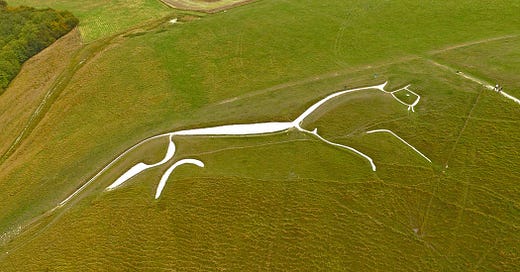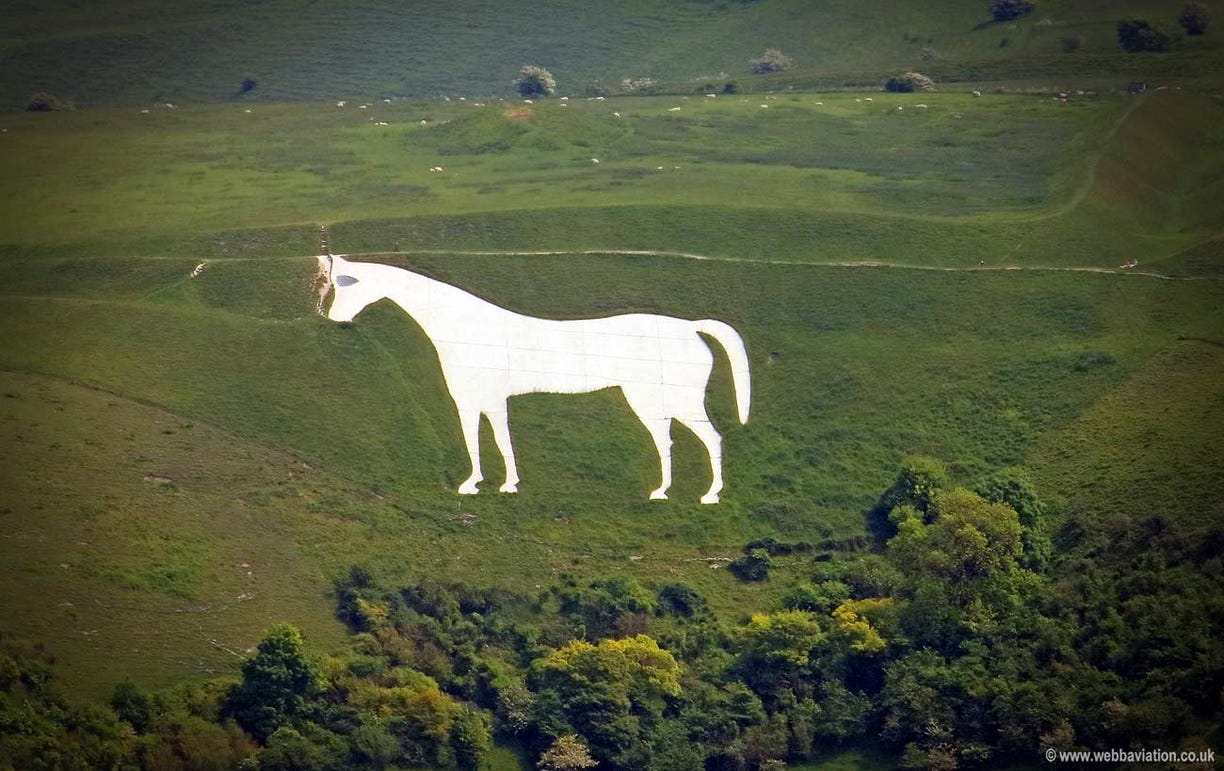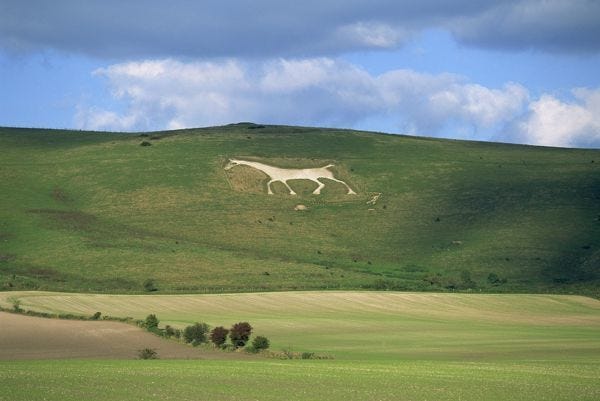There is a certain romance in landscapes touched by human hands millennia ago—marks so old and enigmatic they seem woven into the very fabric of nature. Among Britain’s most arresting cultural landscapes are the great chalk horses of the English countryside. Their stark white silhouettes, cut into verdant hillsides, evoke a quiet power—blending art, mythology, and geography in a way that feels both ancient and totally contemporary. The horse’s form as a symbol, constant across generations and integral to the history of a nation.
Meet the seven—
The Uffington White Horse
Etched into the Berkshire Downs (now Oxfordshire) is the oldest and most mysterious of these figures. Radiocarbon dating of the surrounding earth suggests it was created during the late Bronze Age or early Iron Age, between 1380 and 550 BCE. Its minimalist form—sleek, almost abstract—appears contemporary but this 360-foot-long figure has survived for over three millennia, maintained impeccably, even as its original purpose remains a mystery.
The Westbury White Horse
The next white chalk horse appeared on the escarpment of Salisbury Plain in Wiltshire nearly three thousand years later. Though local legend claims it was first carved in the 9th century to commemorate King Alfred the Great’s victory at the Battle of Ethandun, the earliest confirmed mention dates to 1742, and the current figure, recut in 1778, reflects Georgian tastes for bold landscape statements.
The Cherhill White Horse
Carved in 1780 by Dr. Christopher Alsop of Calne, also known as "The Mad Doctor," the Cherhill White Horse sits on Cherhill Down, near the ancient earthwork of Oldbury Castle. Dr. Alsop is said to have directed the creation of the horse from below, shouting instructions through a megaphone.
The Marlborough White Horse
Cut in 1804 by students of Marlborough College, the Marlborough White Horse is perched on Granham Hill. While smaller and less dramatic than some of its counterparts, this figure represents a charming tradition of chalk carving as a form of youthful expression.
The Osmington White Horse
Distinctive among these figures, the Osmington White Horse, carved in 1808, depicts a horse and rider—believed to represent King George III. Facing out to sea near Weymouth, where the king frequently holidayed. However, legend suggests that George III was displeased, interpreting the figure as a suggestion he should leave.
The Hackpen White Horse
Also known as the "Broad Hinton Horse," the Hackpen White Horse dates from 1838 and was carved to commemorate Queen Victoria’s coronation. Unlike some of the steeper hillside figures, Hackpen’s gentle incline makes it more accessible, and it has been regularly maintained by local volunteers.
The Pewsey White Horse
Carved in 1937 to mark the coronation of King George VI, the Pewsey White Horse is one of the most modern examples. Although it lacks the ancient mystique of Uffington or the historical resonance of Westbury, Pewsey’s horse reflects 20th-century continuity in the tradition of chalk carving.
Have you stood in the presence of any of these great whites?












This is amazing, I have never heard of these Great White horses before. I now want to try to see one in real life. Thank you for sharing! 🤍
Incredible! I had never heard of these amazing horses carved in nature.